No products in the cart.

How To Fix Video Card Issues? The Only Guide You Need
Is your computer screen showing odd lines, glitching, or getting completely blank? Are you experiencing graphical glitches while playing games? Well, these issues are the indicator of the problems with your video card.
A problematic video card can be a frustrating experience, but stress less! This blog will look at the common steps to fix video card problems and get your computer back in well-maintained condition.
How To Identify Video Card Issues: Is Your Video Card Damaged or Not Working?
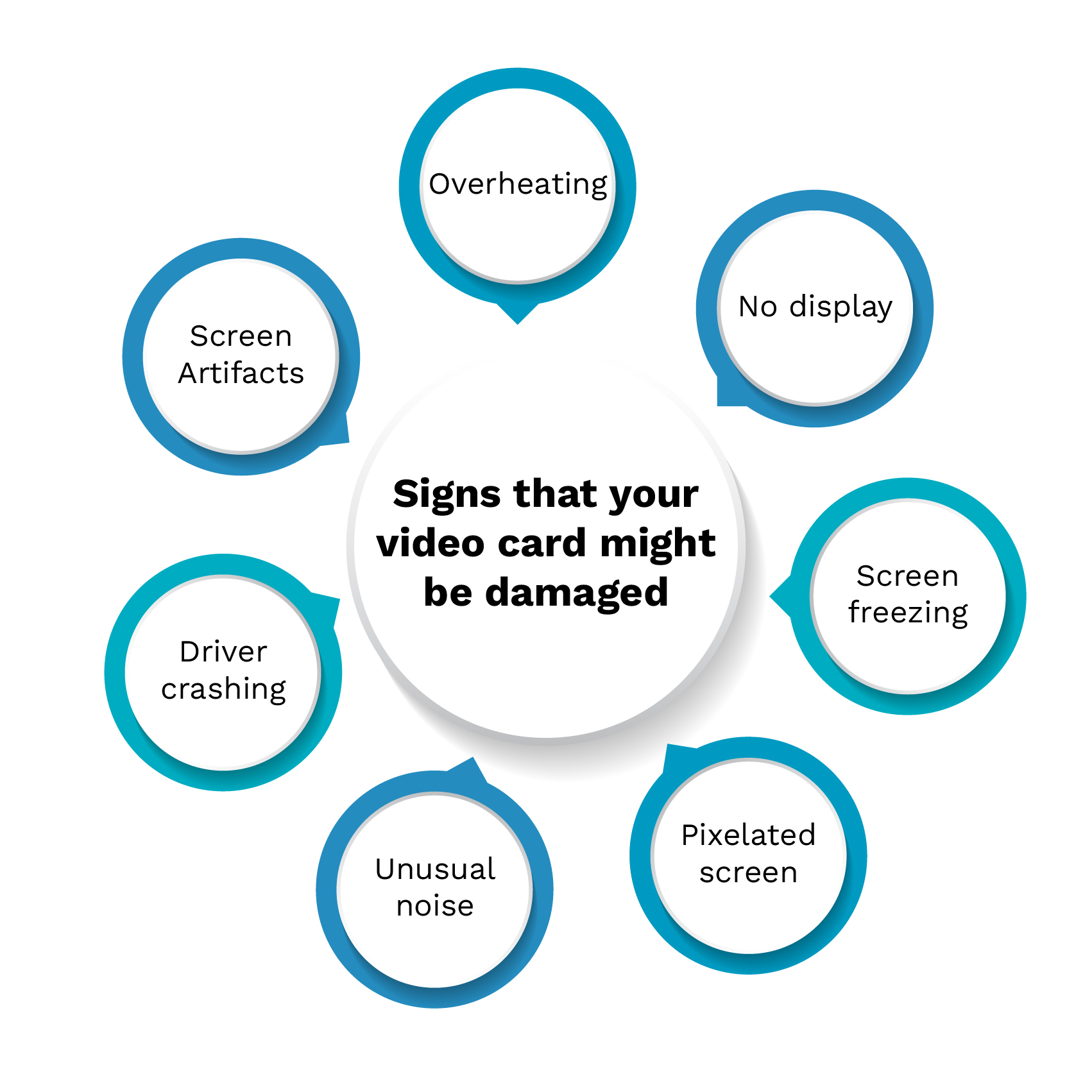
It’s important to determine whether your video card is causing the actual problem or not. Some common indications that indicate you might need video card repair services soon are listed below. If anything happens similar to these signs, connect with the service provider and resolve the issue.
Screen Artifacts
Besides gaming, If you notice strange lines, colors, or patterns on your screen or while using 2D applications like web browsers, image editors, or desktop software, it could be a sign of a video card issue.
Overheating
Overheating can cause your video card to malfunction. If your computer shuts down suddenly or you experience graphical issues during tasks, it might be due to overheating. You can monitor temperatures using software tools like MSI Afterburner or GPU-Z.
Overheating is one of the issues that can not be neglected at any cost. If done, it could lead you in quest of expert computer repair services in Toronto.
No Display
Your video graphics card may be at fault if your monitor remains blank or displays a “no signal” message.
Video Playback Problems
Problems while playing videos, such as pausing, screen tearing, or pixelation, could be related to your video graphics card. Ensure your video drivers are up-to-date, and consider checking the video playback settings.
Unusual Noise
Some video cards have fans or other cooling tools that can make noise. If you hear unusual or loud sounds from your video card, it may be a sign that the cooling system is alarming.
Driver Crashes
Frequent driver crashes, or error messages related to your video card are definitely red flags.
Flickering and Freezing
Random screen flickering or system freezes can also point to video card problems.
Checklist To Address Video Card Problems
Before jumping on the software troubleshooting bandwagon, performing physical checks to ensure your video card is properly installed and connected is a good idea. Follow these steps.
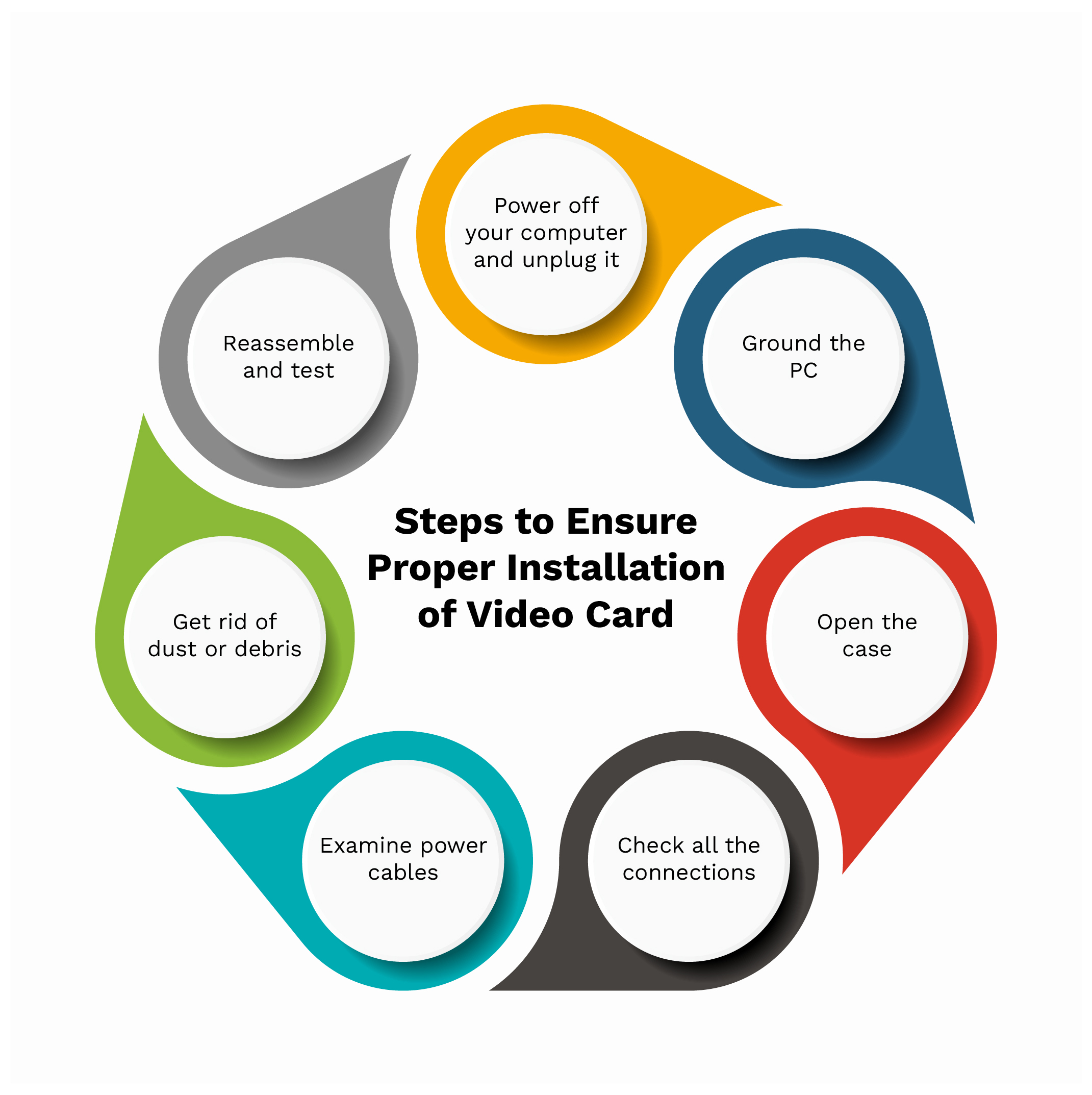
Power Off and Unplug
Turn off your computer and unplug it from the power source to assure safety during inspection and potential fixes.
Self-Grounding
Computer components, including video cards, are susceptible to damage caused by static electricity. Touch the metal part of your computer case or use an antistatic wrist strap to ground yourself.
Open the Case
Carefully open your computer’s case to access the internal card. The process may vary depending on your PC’s model, so consult the service provider.
Check Connections
Inspect the video card’s PCIe (Peripheral Component Interconnect Express) slot connection. Ensure the card is securely placed in the slot and the retention bracket is connected.
Examine Power Cables
Verify that all power cables, such as PCIe power connectors, are properly connected to the video card. Loose or disconnected power cables can take you towards video card issues.
Dust and Debris
Dust and debris can accumulate on the video card and its fans, causing overheating and performance problems. Use compressed air to clean the card and surrounding areas carefully.
Reassemble and Test
After performing these physical checks and ensuring everything is in order, close the computer case, plug in the power, and turn on your PC to see if the issue occurs.
Tips To Fix Video Card Problems
If your video card issues remain even after physical checks, it’s time to go into software troubleshooting. Here’s a step-by-step direction to fixing video card problems:
Update Graphics Drivers
Old or corrupted video graphics drivers are a common cause of video card issues. To update your graphics’ outdated drivers, follow the given steps:
- Visit NVIDIA, AMD, or Intel and download the updated drivers for your model.
- Follow the on-screen instructions and install the drivers.
- To apply the changes, restart your device.
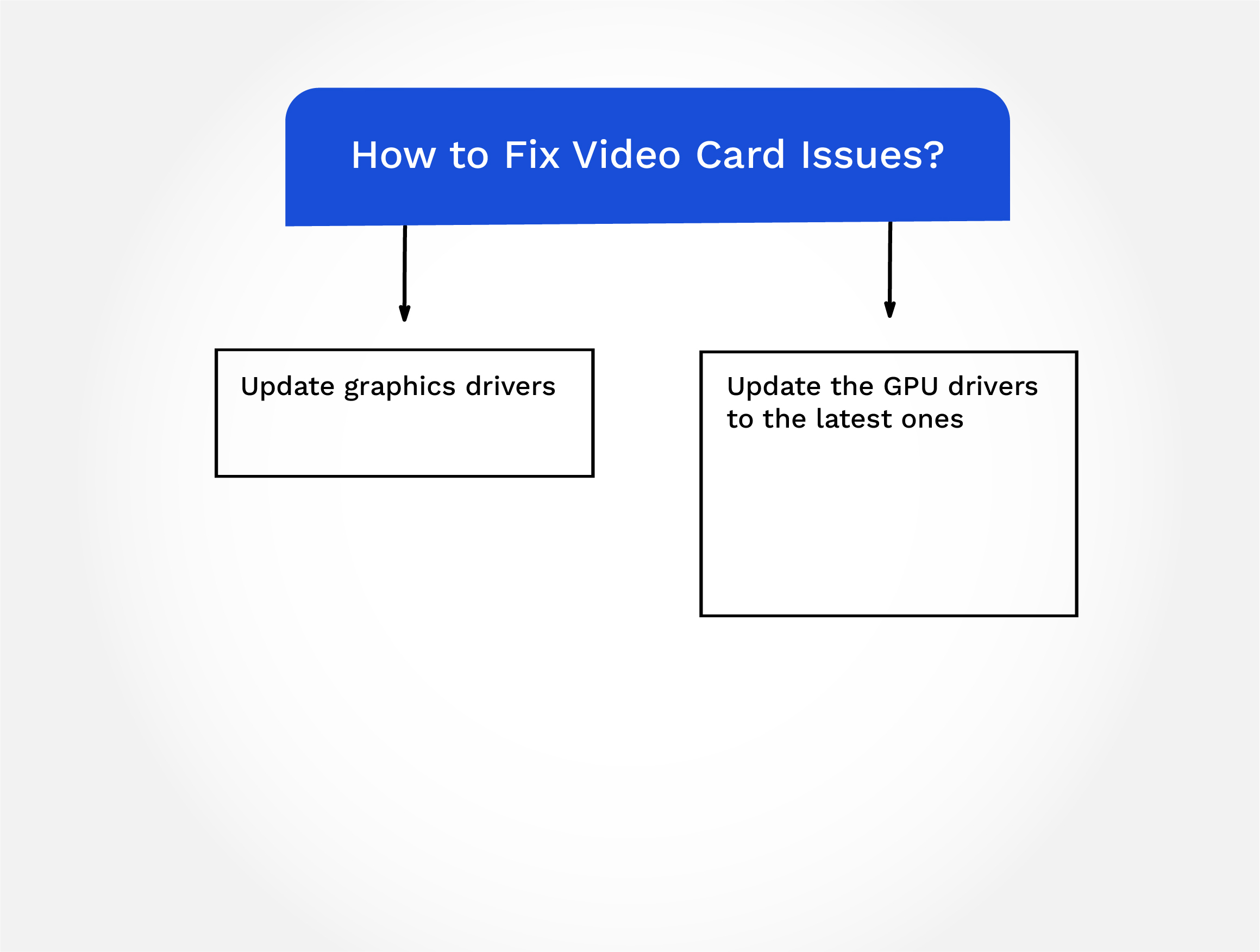
Rollback Drivers
Sometimes, the latest graphics drivers may introduce compatibility problems. If you detect issues after updating your drivers, consider moving back to a previous version:
- Select “Device Manager” from the menu list by right-clicking the Start button.
- Right-click your graphics card under “Display adapters” and choose “Properties.”
- Click “Roll Back Driver” in the driver tab if the option is available. Follow the prompts to finish the process.
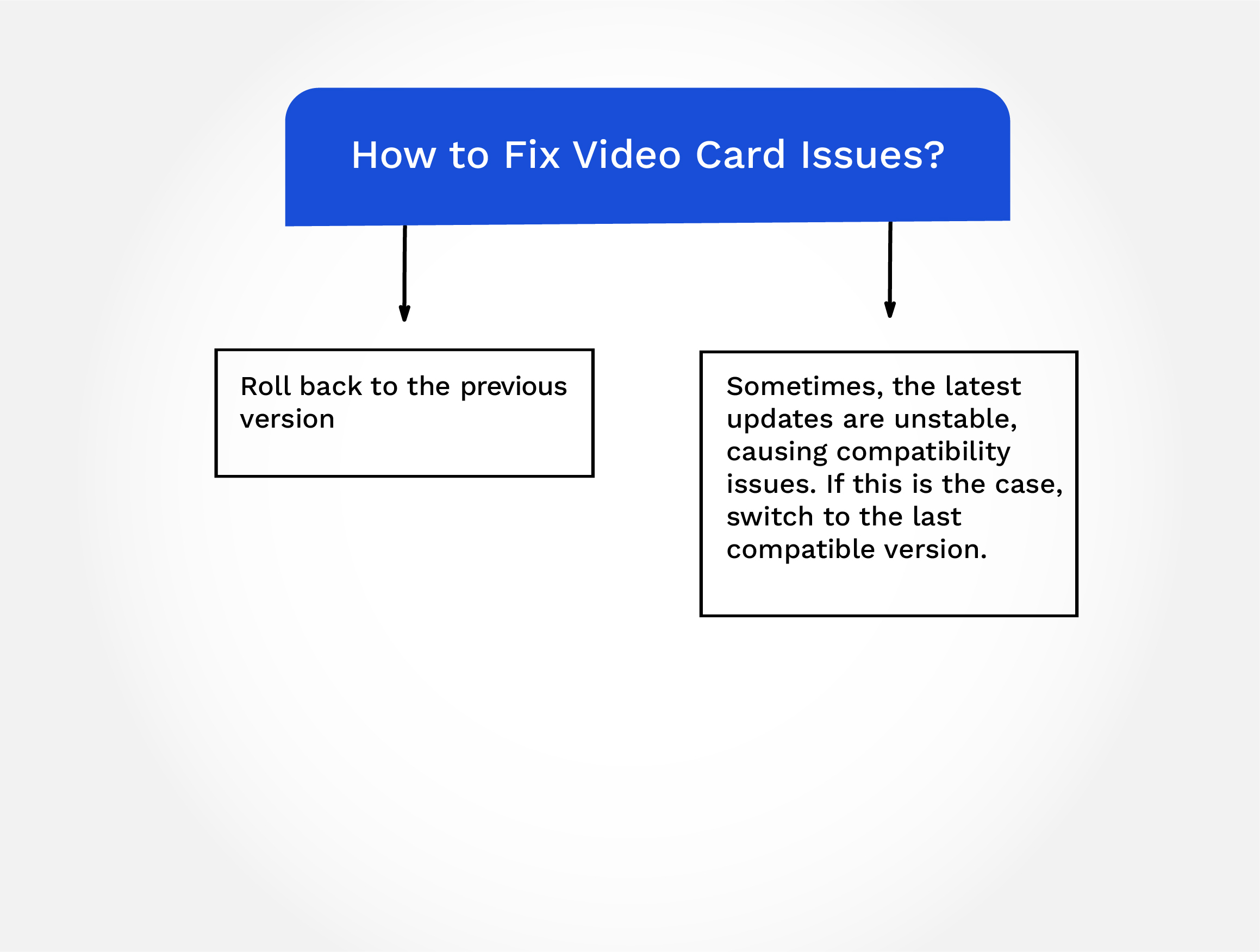
Adjust Graphics Settings
You can improve the performance and stability by adjusting your graphics settings:
On your desktop, click and select “NVIDIA Control Panel” or “AMD Radeon Settings,” depending on your graphics card.
- Adjust settings such as resolution, refresh rate, and anti-aliasing to match your monitor and game requirements.
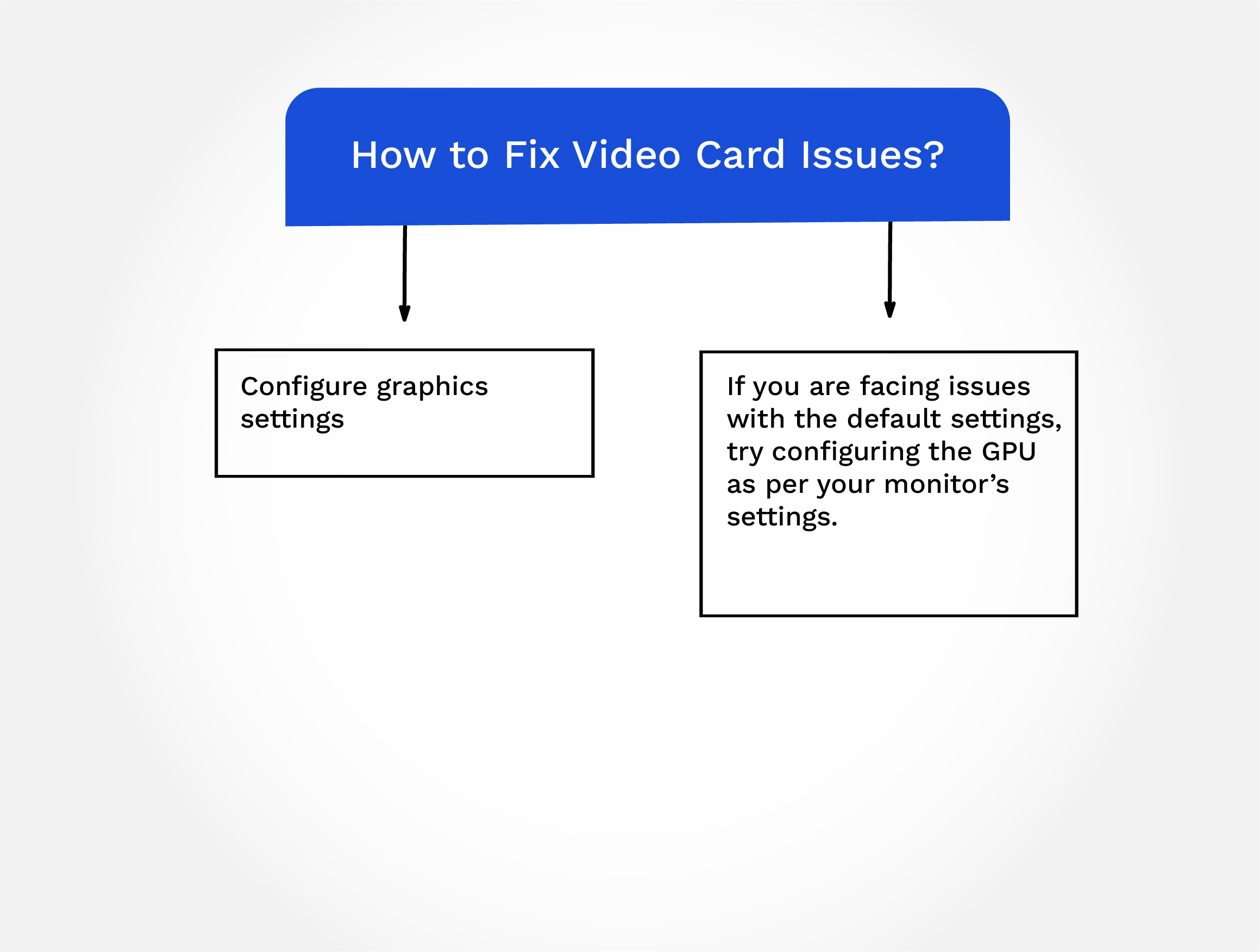
Check for Overheating
Overheating can cause video card problems. Ensure your video graphics card is sufficiently cooled:
- Clean any remaining dust from the video card and its fans.
- Check that all fans are functioning correctly. Replace them if necessary.
- Consider adding additional case fans for better overall airflow.
How to Monitor Temperatures?
Use monitoring software like MSI Afterburner or HWMonitor to monitor your video graphics card’s temperature. If it consistently reaches temperatures like 90 degrees, consider improving your PC’s cooling or replacing the thermal paste on the GPU.
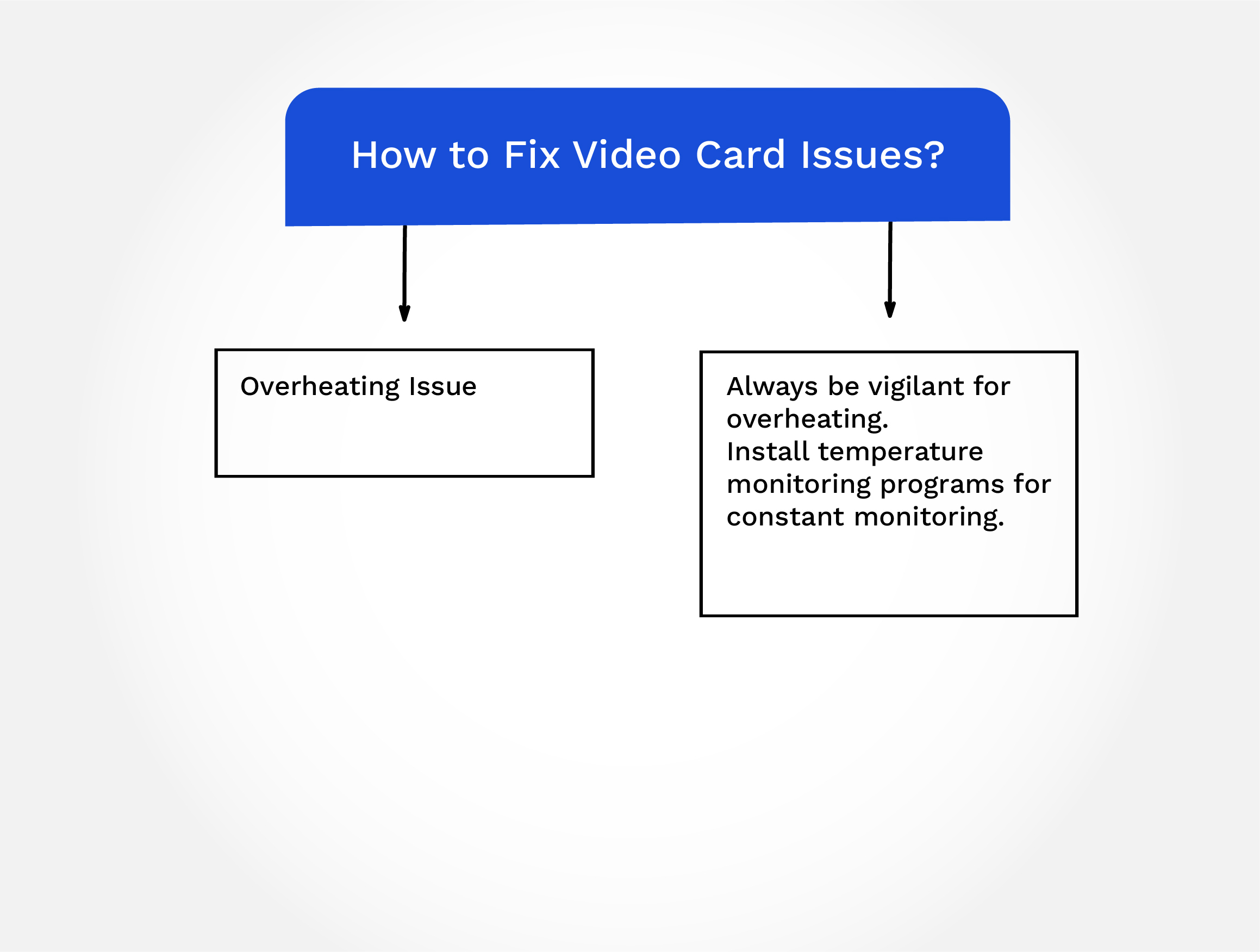
Test in Safe Mode
Booting your computer into safe mode can help you understand if the issue is caused by third-party software or drivers:
- Press the Windows key with the key “R” together to open the Run dialog.
- Type “msconfig” and press Enter.
- In the System Configuration window, go to the “Boot” tab and check “Safe boot.”
- Restart your computer.
If the problem doesn’t occur in Safe Mode, it suggests a software conflict with a third-party application or driver.
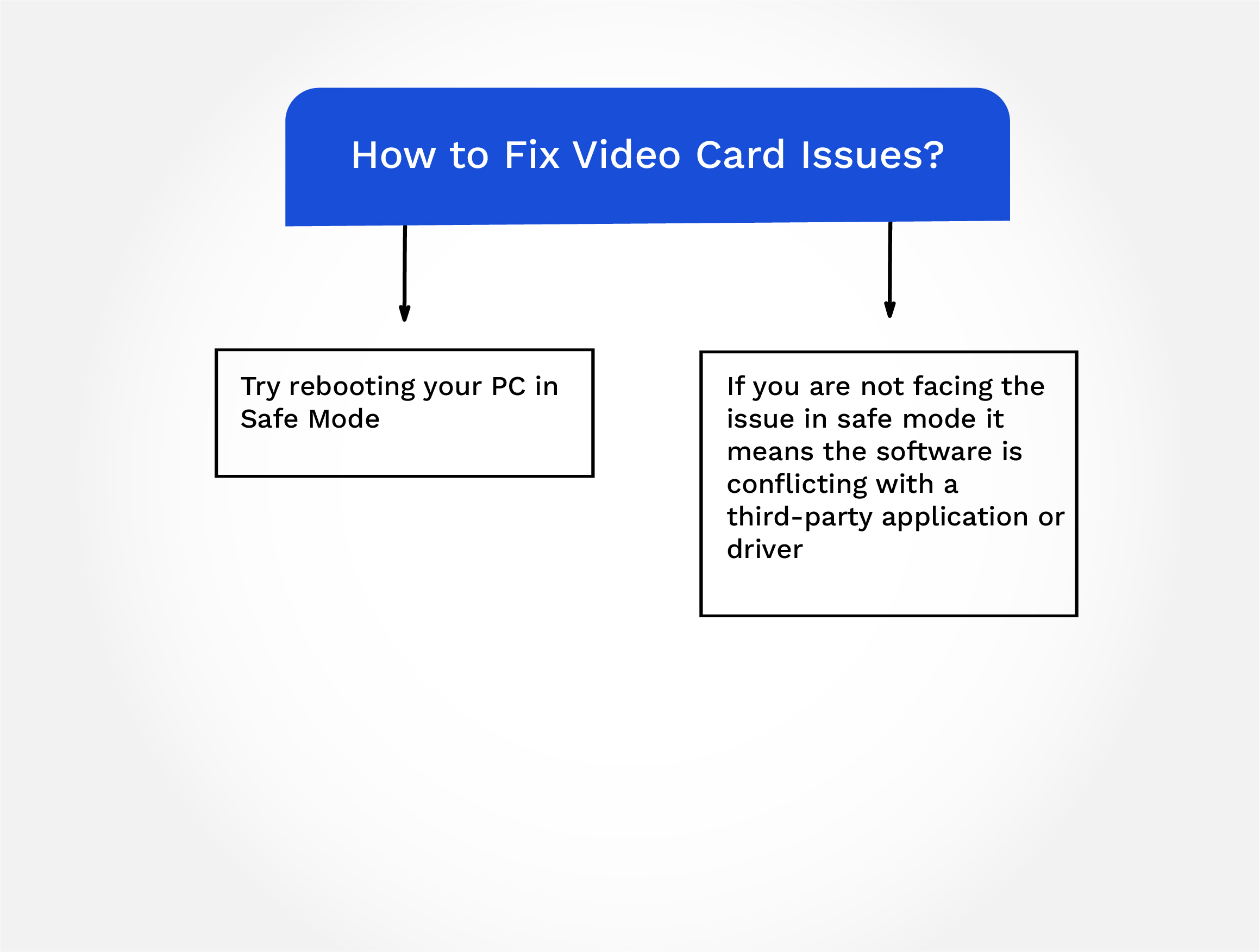
Check for Hardware Conflicts
Clashing hardware components can also cause video card issues. Confirm that no additional devices are using the same (Interrupt Request) as your video graphics card:
- Open “Device Manager” again and expand the “System Devices” section.
- Right-click “PCI Bus” and select “Properties.”
- Go to the “Resources” tab and check for clashes. Resolve any disputes if found.

Conclusion
Video card issues can frustrate computer users but are often fixable in the right direction. You can follow the steps provided in this blog to fix your video card issues. By keeping up to date with these steps, you can analyze and fix common video card problems yourself.
Besides, contact us if you are looking for professional maintenance. We provide expert computer repair services in North York, GTA.
